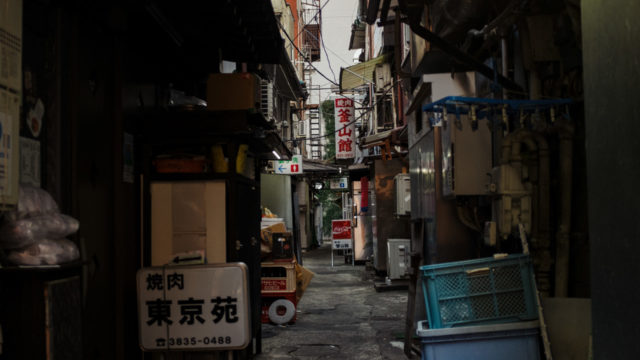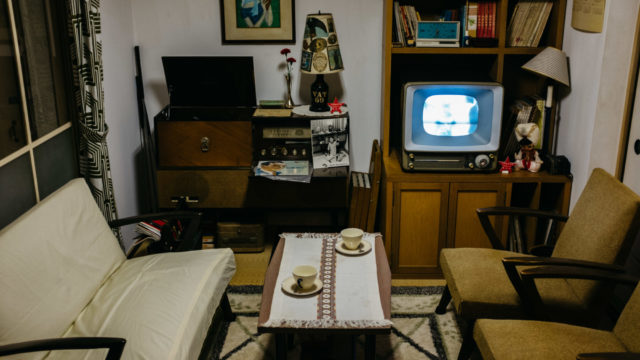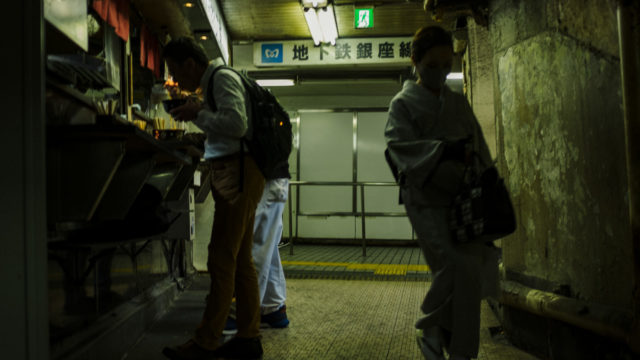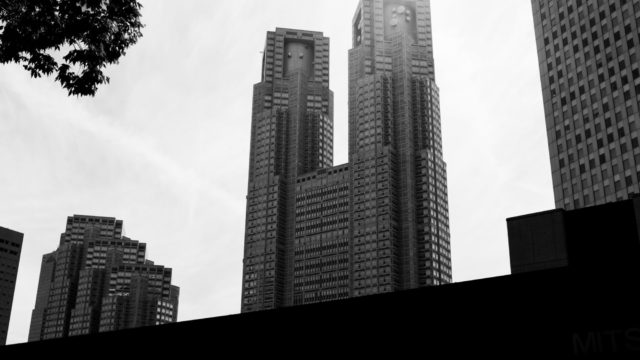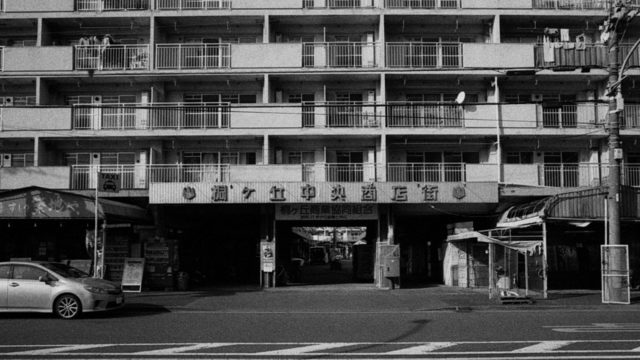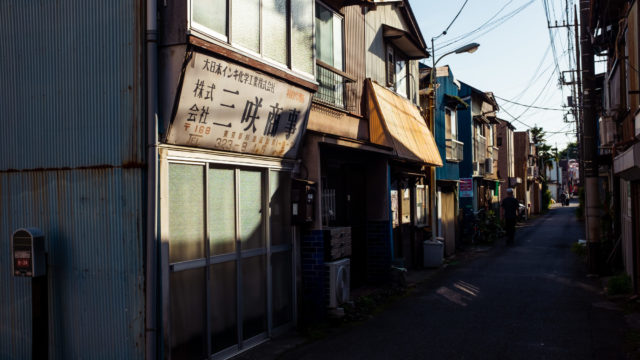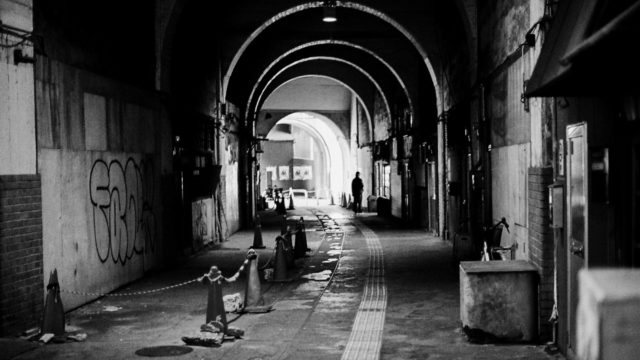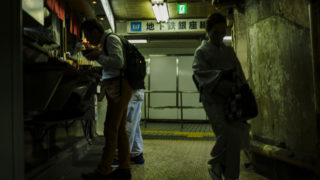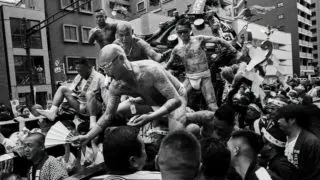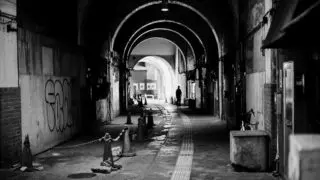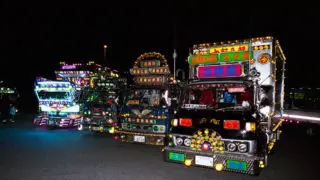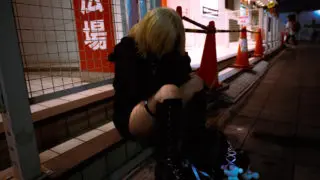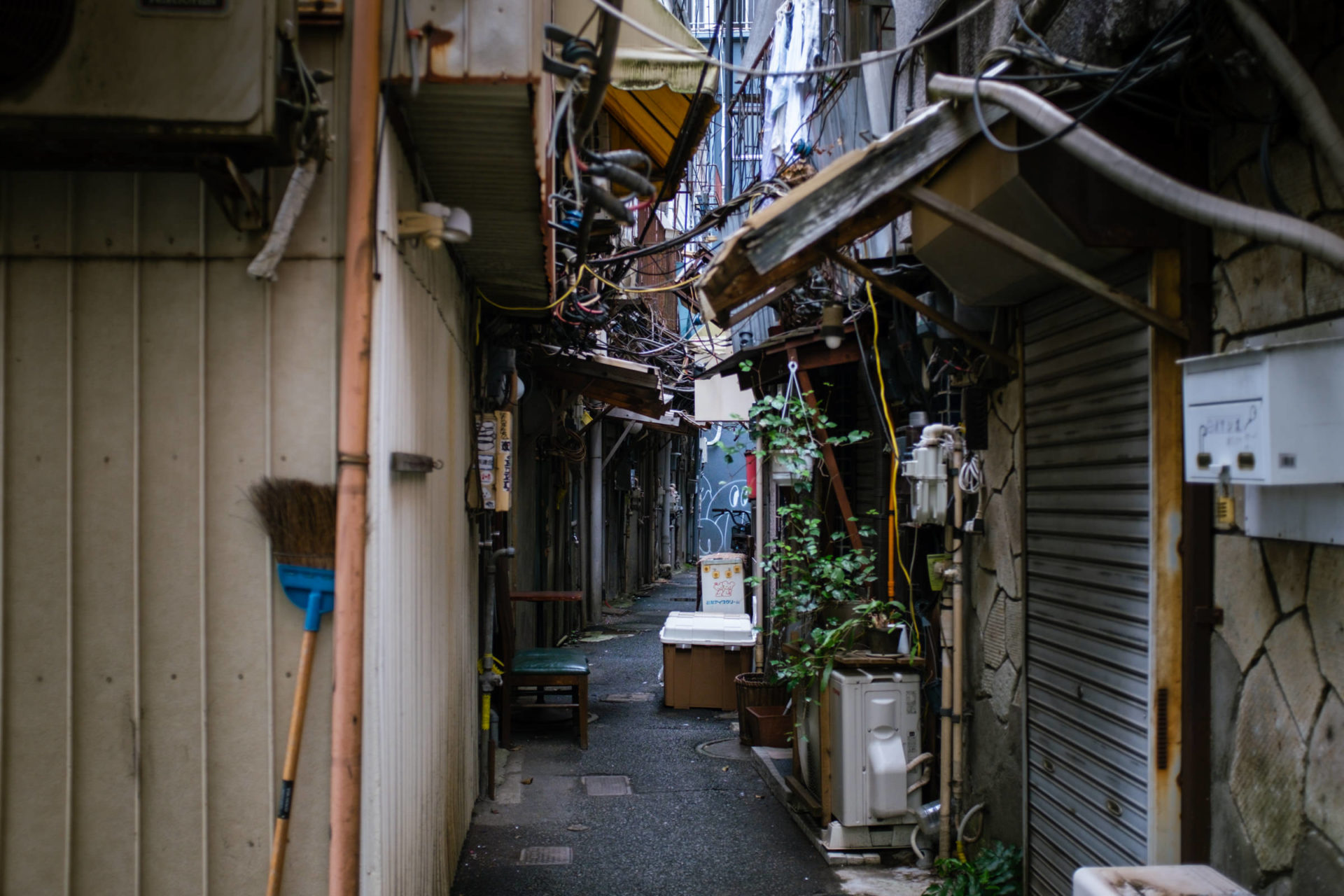
The term ‘barakku’ in Japanese refers to a crude small house built by combining debris from collapsed homes and other materials. After World War II, barakku rapidly spread throughout urban areas where many buildings had collapsed.
In particular, in black markets and Korean settlements, bars, shops and residences made from these shoddy constructions crowded into narrow areas and established their own unique culture.
In this article, I visited Doburoku Yokocho, a barakku street (shanty town) in Kawasaki. Unlike “Omoide Yokocho(Piss Alley)” in Shinjuku or “Nonbei Yokocho” in Shibuya, Doburoku Yokocho is a deserted and eerie street where no one walks.
Although it was a nerve-wracking place to walk alone, it was also a very interesting place. So, while exploring its history, I would like to share the photos I took.
Color Photos:FUJI X100T
Black&White Photos:Nikon FE, Ilford HP5 plus
- The 1947 Kawasaki Incident: A Conflict over Bootleg Liquor during the Post-War Shortages
- The Birth of Doburoku Yokocho: A Korean Settlement in Japan from Around 1948
- A Glimpse into the Haunting Silence of Modern Doburoku Yokocho
- Post-war barakku town that could disappear anytime
- Watch Doburoku Yokocho in a Video(2023)
- LOCATION MAP
The 1947 Kawasaki Incident: A Conflict over Bootleg Liquor during the Post-War Shortages
After World War II, Japan’s urban population rapidly increased due to the return of soldiers from military service and the repatriation of those who had lived in foreign territories.
As a result, there was an overwhelming shortage of food and supplies. Under the food management system, which regulated almost all food items, obtaining food outside of the rationing system was illegal. This led to the creation of black markets involving the involvement of yakuza and other criminal organizations.
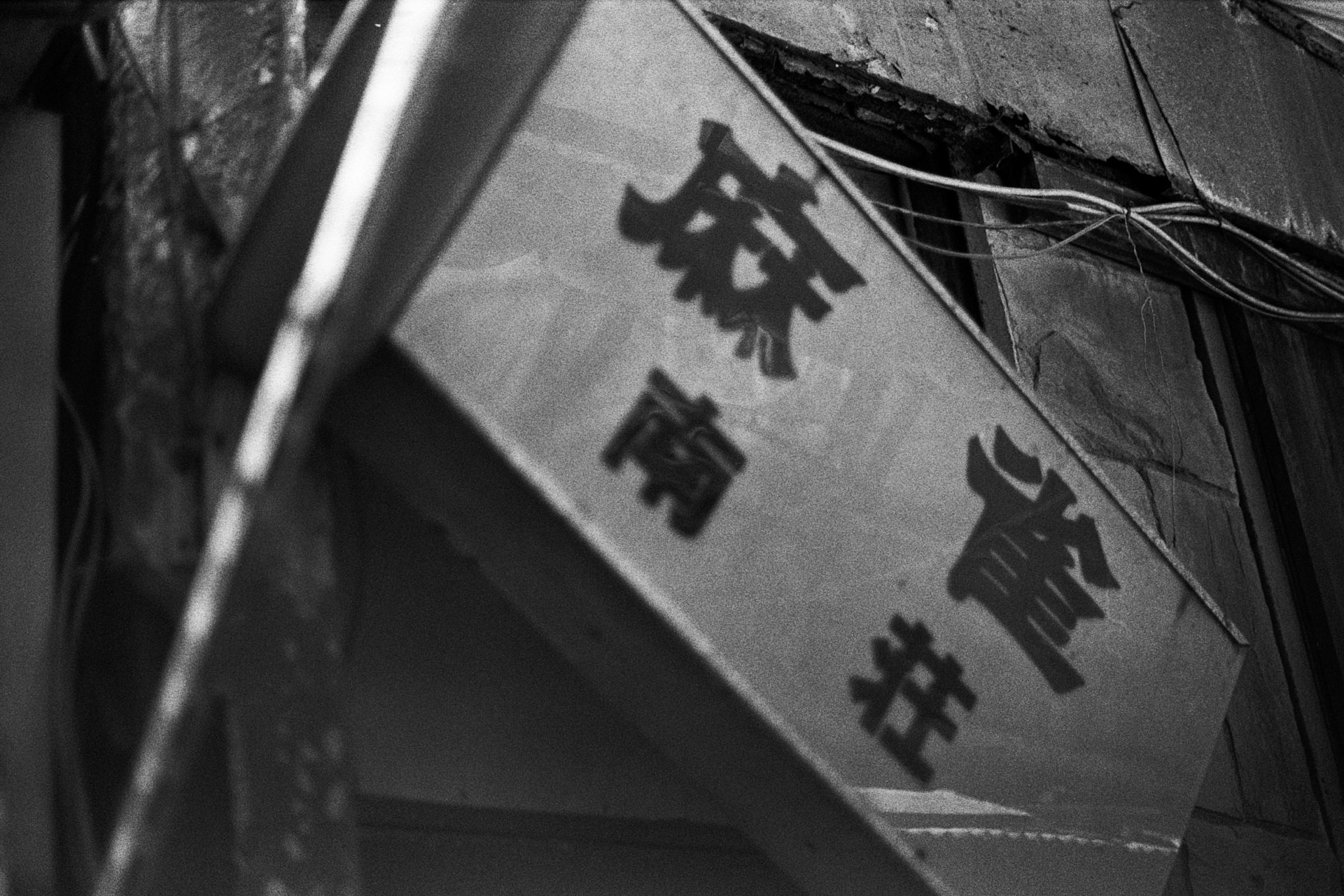
On the other hand, it is said that korean residents in Japan, who had foreign nationality, were able to obtain rice and other food items without worrying about police intervention. They began making illegal liquor known as “doburoku” and also opened “horumon” (offal) restaurants, a type of Korean cuisine.
In a broad sense, doburoku refers to a type of fermented liquor made from grains that has been produced in Korea and Japan for a long time.
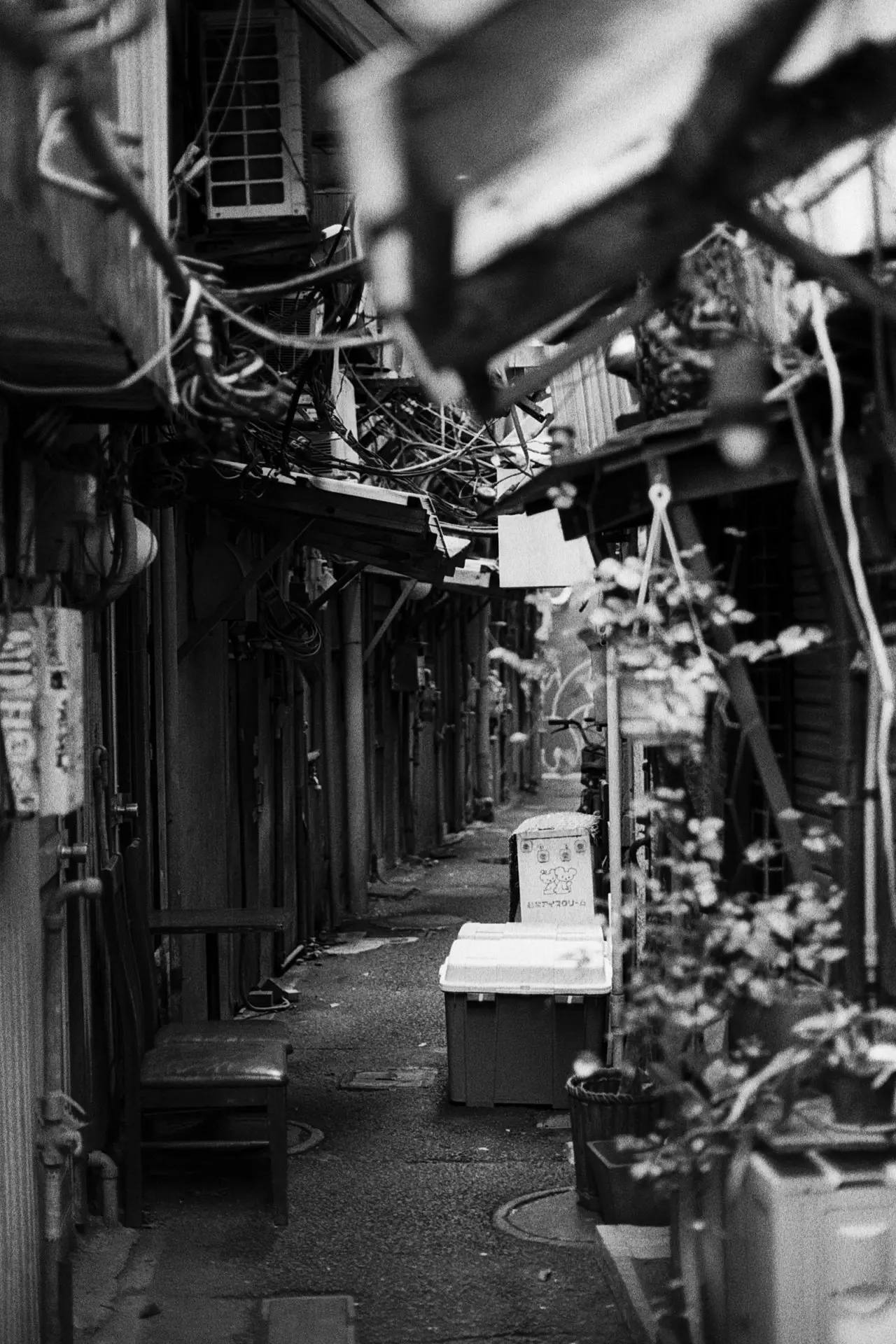 Doburoku Yokocho, April 2023
Doburoku Yokocho, April 2023The production of bootleg liquor, which naturally did not incur liquor taxes, was an illegal act. However, due to the influence of black markets and other factors at the time, bootleg liquor was widely circulated.
As of September 1947, the production of bootleg liquor was 502,000 kiloliters, significantly exceeding the production of regular liquor at 343,000 kiloliters.
In the Korean residents’ settlement of Kawasaki, which was also producing bootleg liquor, a riot known as the Kawasaki Incident occurred on June 23, 1947.
The tax office, with the support of 88 tax officials, 2 prosecutors, 206 police officers, and military police from the occupying forces, carried out a crackdown. More than 100 people were arrested, and evidence such as 15,000 liters of bootleg liquor, raw materials, and brewing equipment were seized.
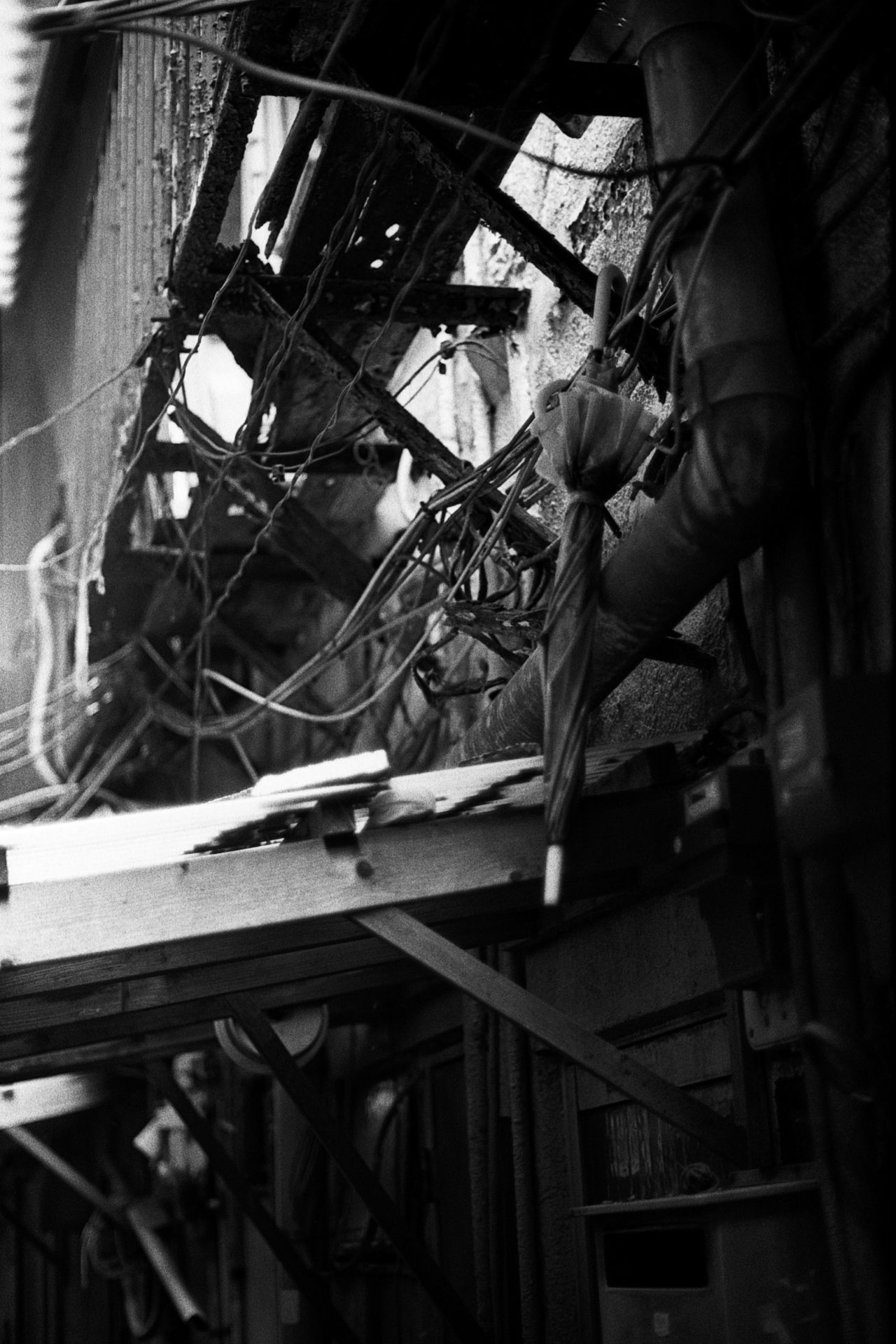
However, the Korean residents did not simply watch as they were arrested. They rebelled against the crackdown and attacked tax officials. As a result, the situation escalated into an incident in which a tax office worker who was leading the crackdown was beaten to death by the rioters.
The Birth of Doburoku Yokocho: A Korean Settlement in Japan from Around 1948
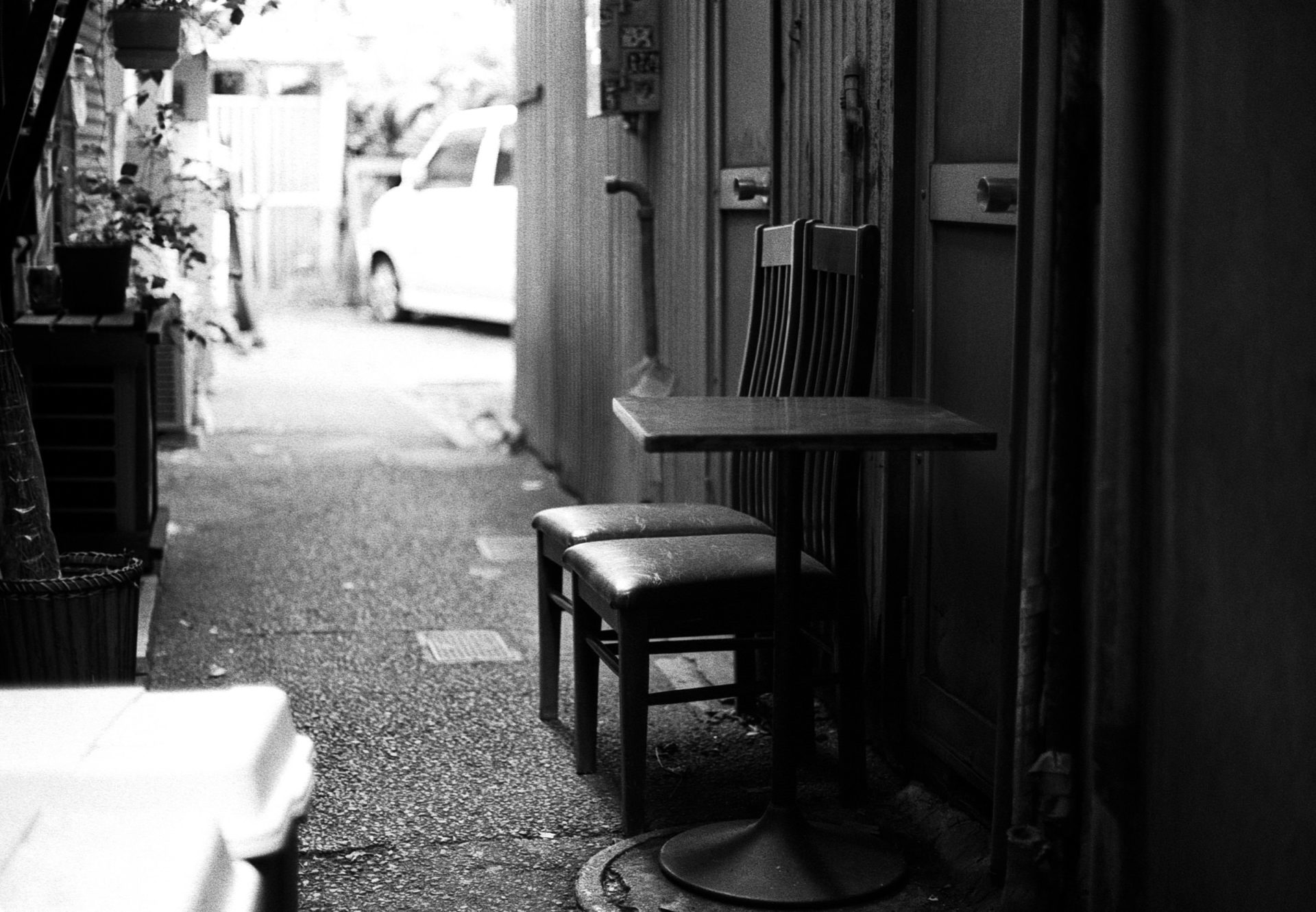
It is unclear whether or not the Kawasaki incident had an impact, but in the year following the incident, the Korean residents who had formed a settlement in front of the Kawasaki municipal streetcar station were forced to relocate. The alternative location provided for them was the current area known as “Doburoku Yokocho.”
According to accounts, not only did the Korean residents move from the area in front of the station, but also from various other locations in the vicinity, gathering in Doburoku Yokocho where they could build their own homes and live freely.
Testimonies of the era have been preserved at the online archive, “Kawasaki Korean Residents Living and Cultural Museum.
The gathered Korean residents built makeshift homes out of ‘barakku’ and began making bootleg liquor and opening horumon-yaki (grilled meat inn) to make a living. When the Kang family moved in, almost all of the approximately 40 homes were horumon-yaki and were also serving the bootleg liquor.
(…)
The primary customers at the horumon-yaki lining the street were city hall workers, men returning from bicycle or horse races, and those engaged in physical labor.At that time, there were factories of Ajinomoto and Meiji Seika, and there were many laborers.When Kang started the business, he didn’t remember the price of the bootleg liquor, but his wife, who came to marry him in 1960, remembered that a cup of bootleg liquor was 40 yen, a cup of clear liquor was 70 yen, and a serving of horumon-yaki was 150 yen. It was an affordable price for laborers to come and relieve their worries.
The area around Kawasaki station was a scary place back then, with yakuza offices and drug users wandering around. Kang remembers a drunk yakuza throwing a bowl of doboroku in her father’s face. There were also frequent gunfights during gang conflicts.
Source: Kawasaki Korean Residents Living and Cultural Museum
A Glimpse into the Haunting Silence of Modern Doburoku Yokocho
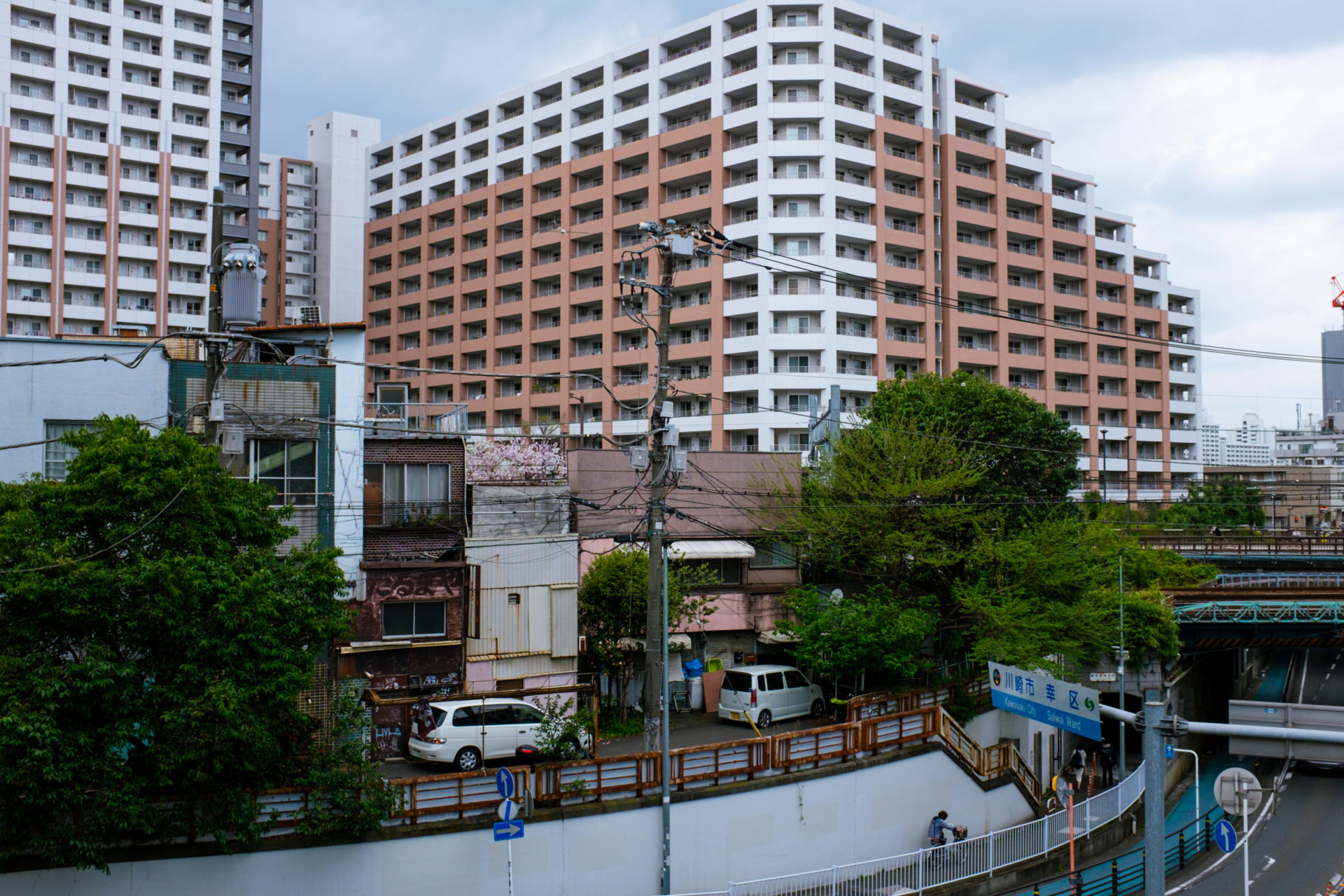
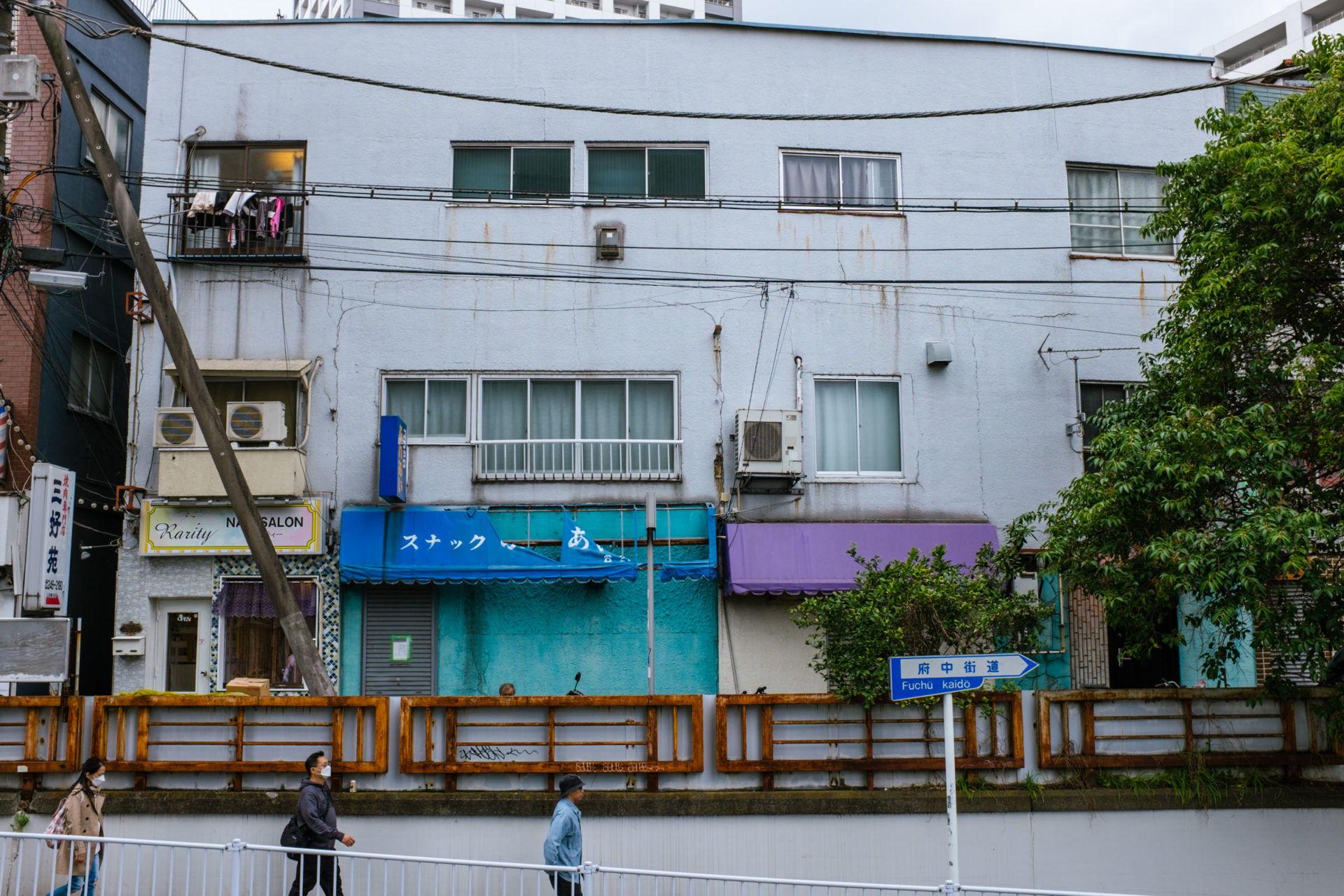
The Doburoku Yokocho is located in a prime location between JR Kawasaki Station and Keikyu Kawasaki Station. It’s less than a 10-minute walk from JR Kawasaki Station. The area has a clearly unusual atmosphere, and the contrast with the luxury condominiums visible in the background is also striking.
The entrance is such that one might wonder, “Do we enter from here?” However, I fearlessly stepped forward. There are almost no shops in operation, and the street has become dilapidated.
Originally, there were also private ticket vendors unique to Japan called “Nomiya” who accepted horse racing bets outside of official racetracks. Of course, Nomiya’s operation was illegal, and it was one of the businesses run by the Yakuza.
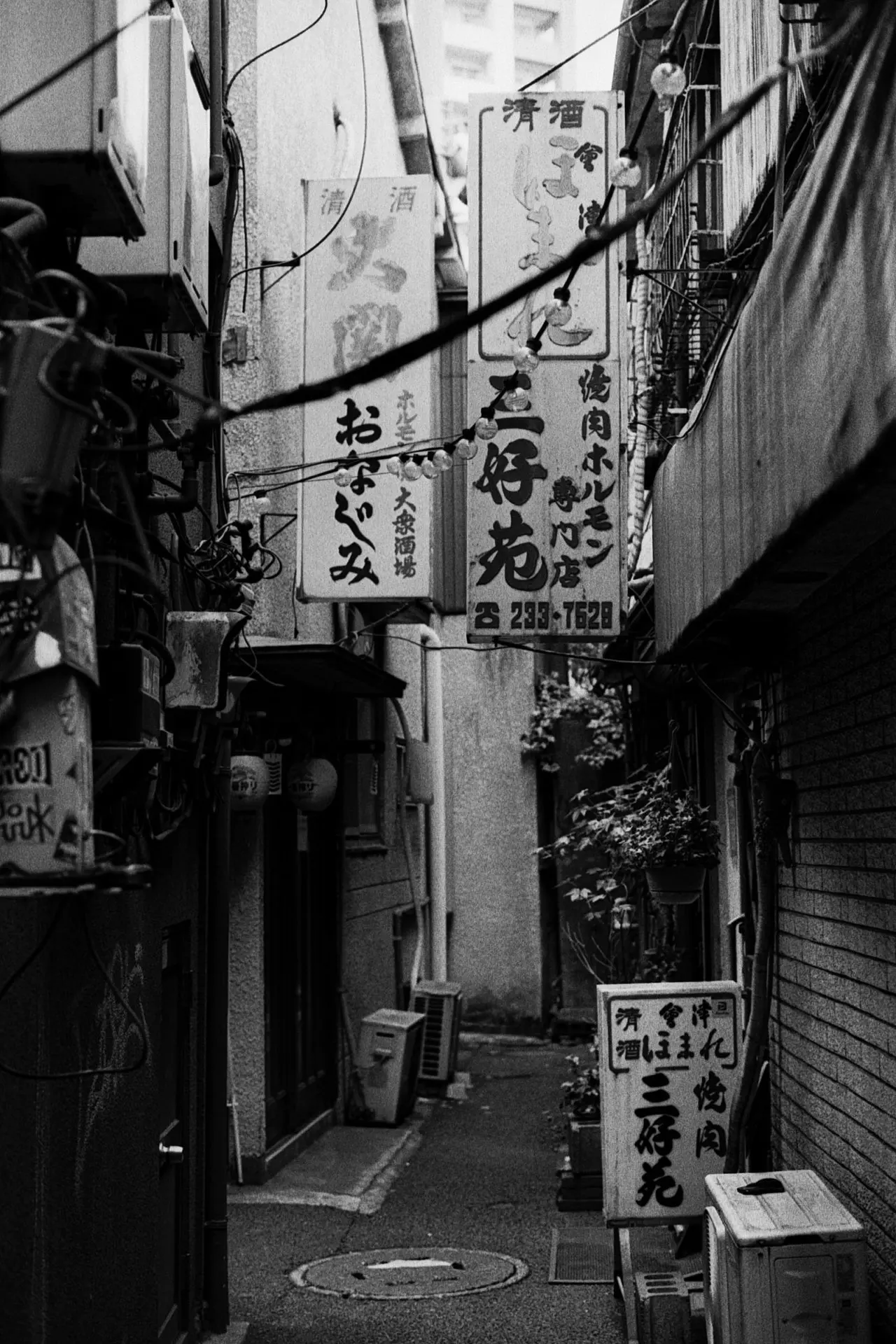
While the street appeared to be abandoned, “Miyoshien” and “Onajimi”, yakiniku restaurants, were in operation. I visited “Onajimi” later and was relieved to find that it was a normal yakiniku restaurant.
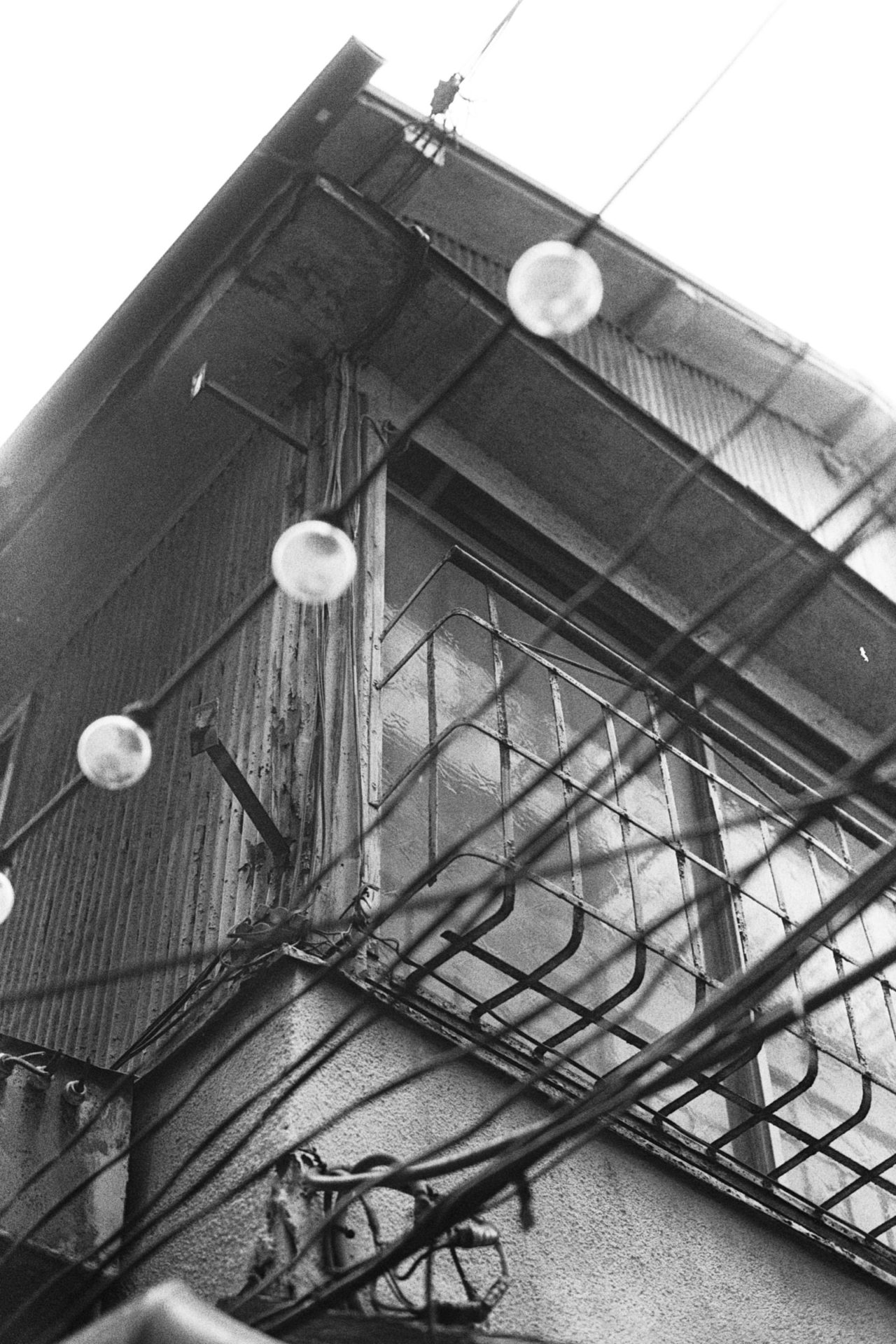
If you go down the left street from “Miyoshien” and “Onajimi,” you’ll come across a ruin. Upon investigation, there was a fire in November 2022, and a 69-year-old woman died. A clean bouquet of flowers was placed, indicating it had not been there for long.
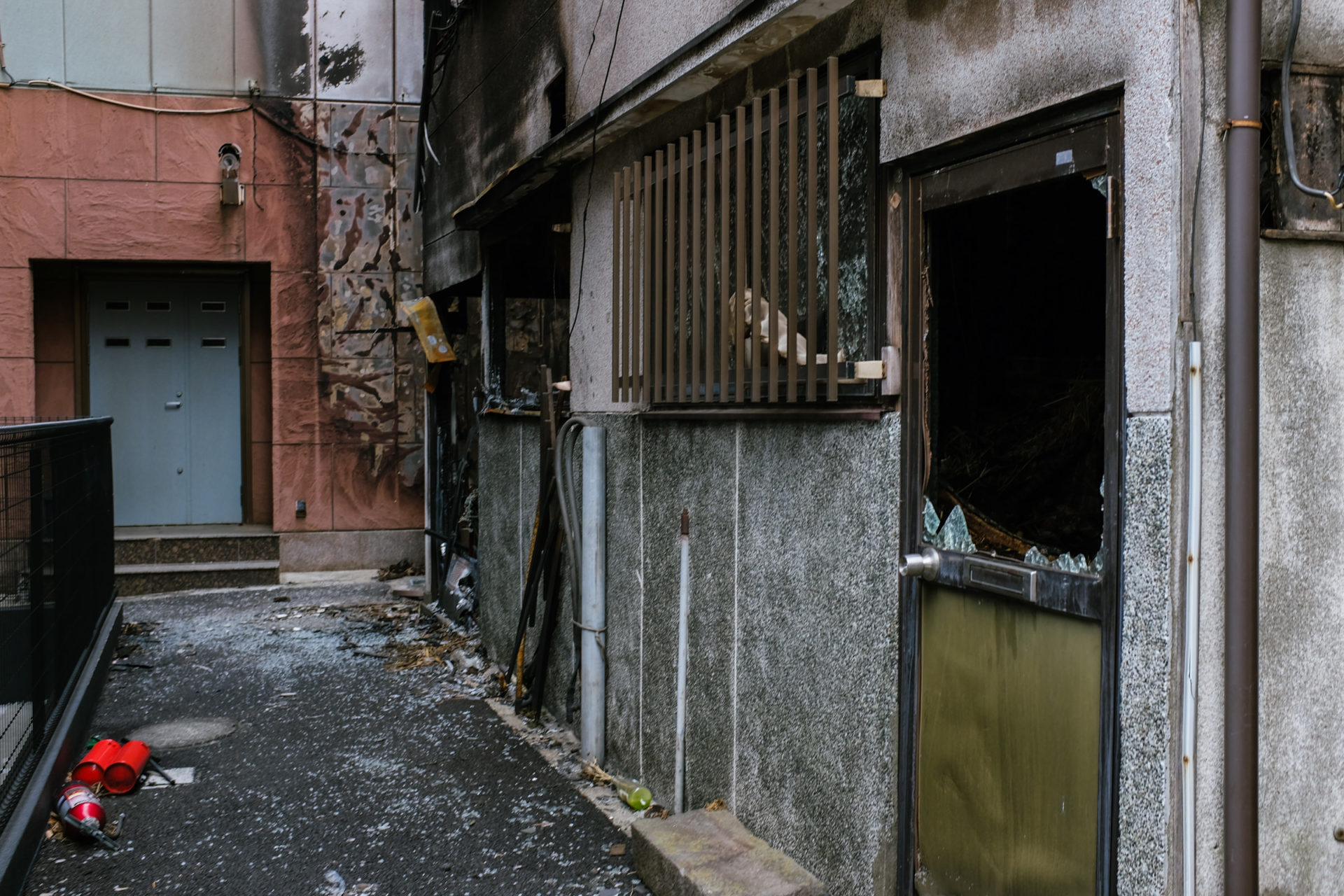
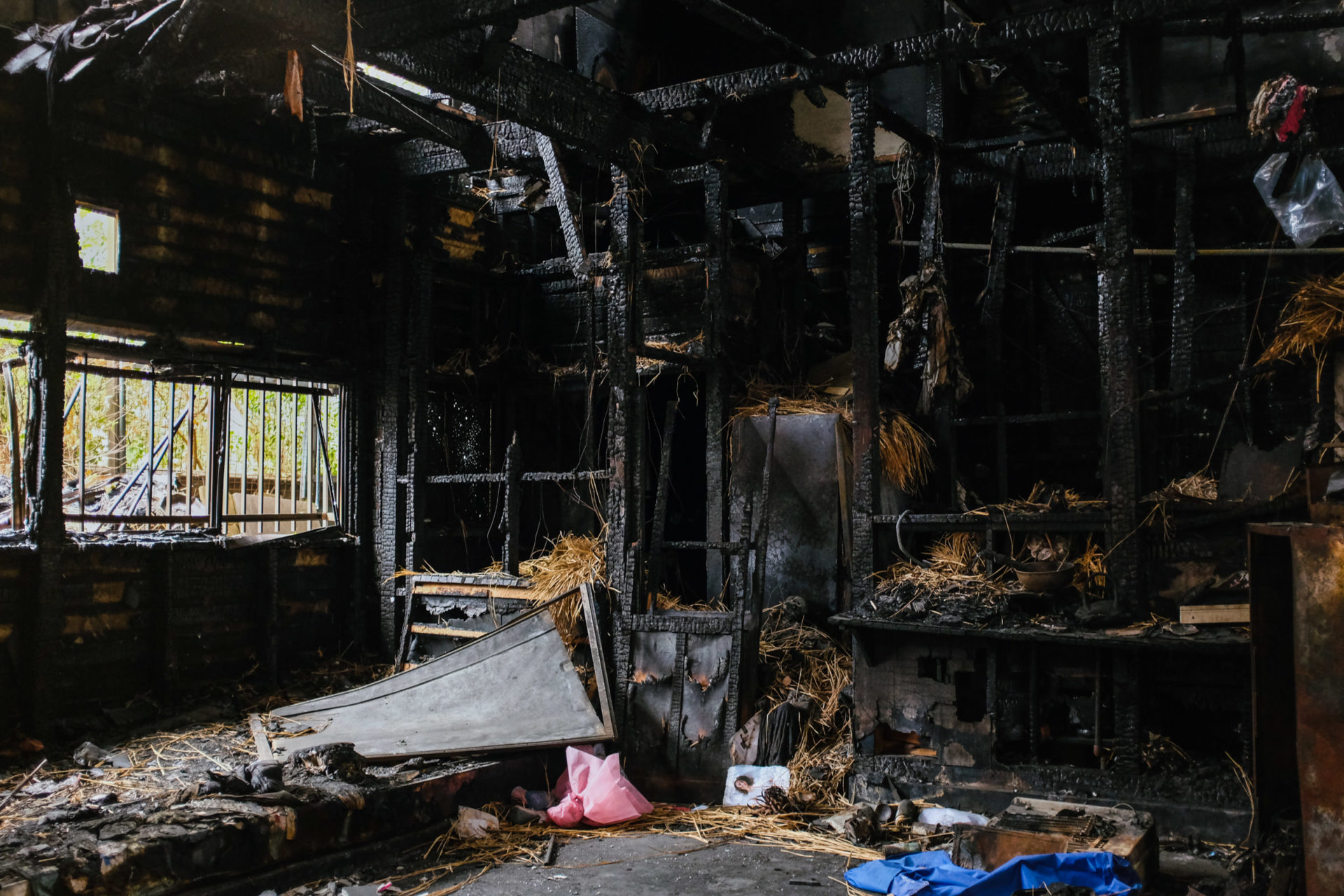
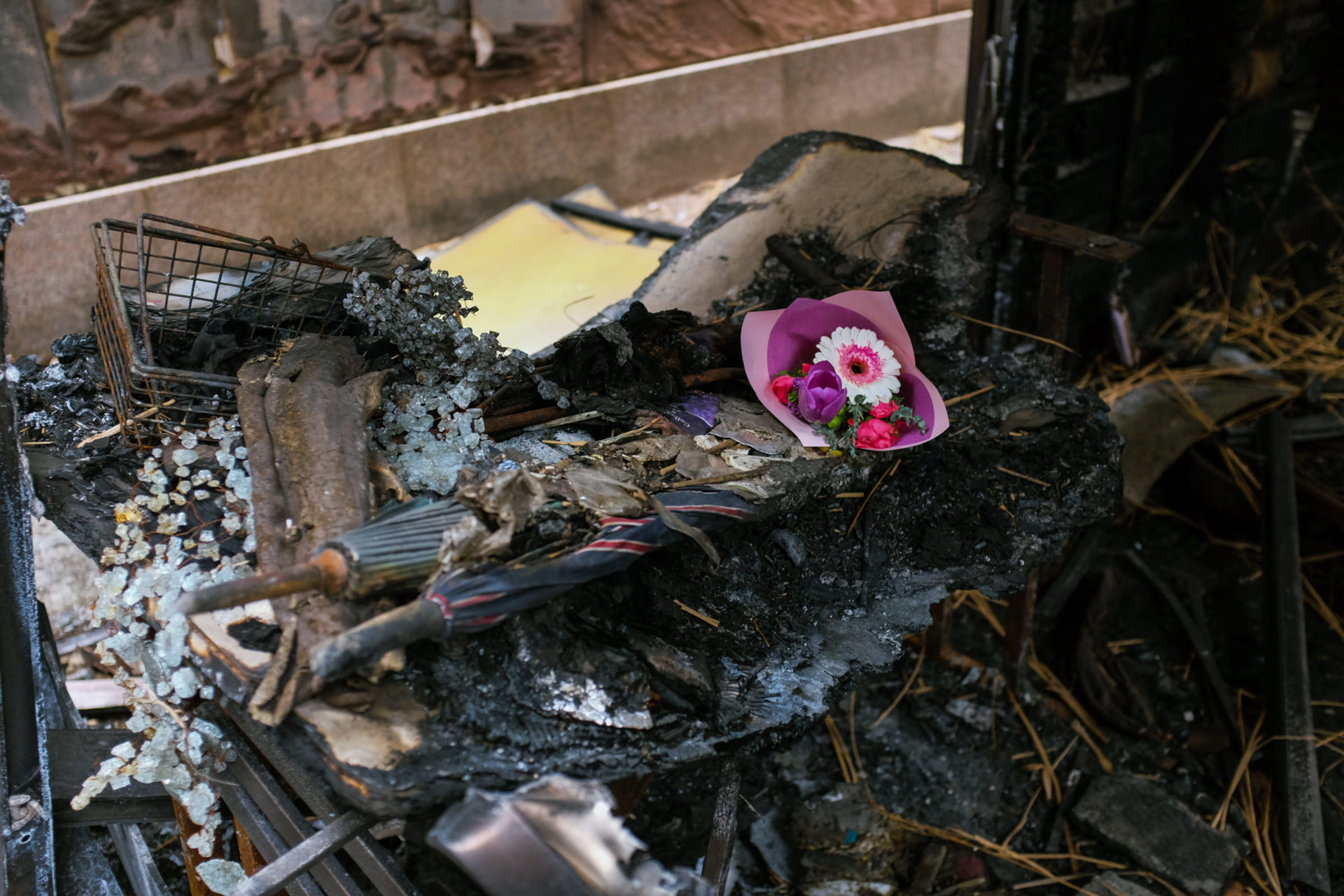
Post-war barakku town that could disappear anytime
There are various barakku towns like this in Japan, but many were built around the time when Japan lost the war in 1945, and over 70 years have already passed.
Since it is difficult to build such towns according to building codes, and urban redevelopment is being carried out in various places, these views may soon become unavailable.
That’s why I want to take pictures of these barakku towns now and leave them as records.
Kawasaki is located about 30 minutes by train from Shinjuku, so if you’re interested, I highly recommend searching for this hidden gem and checking it out.
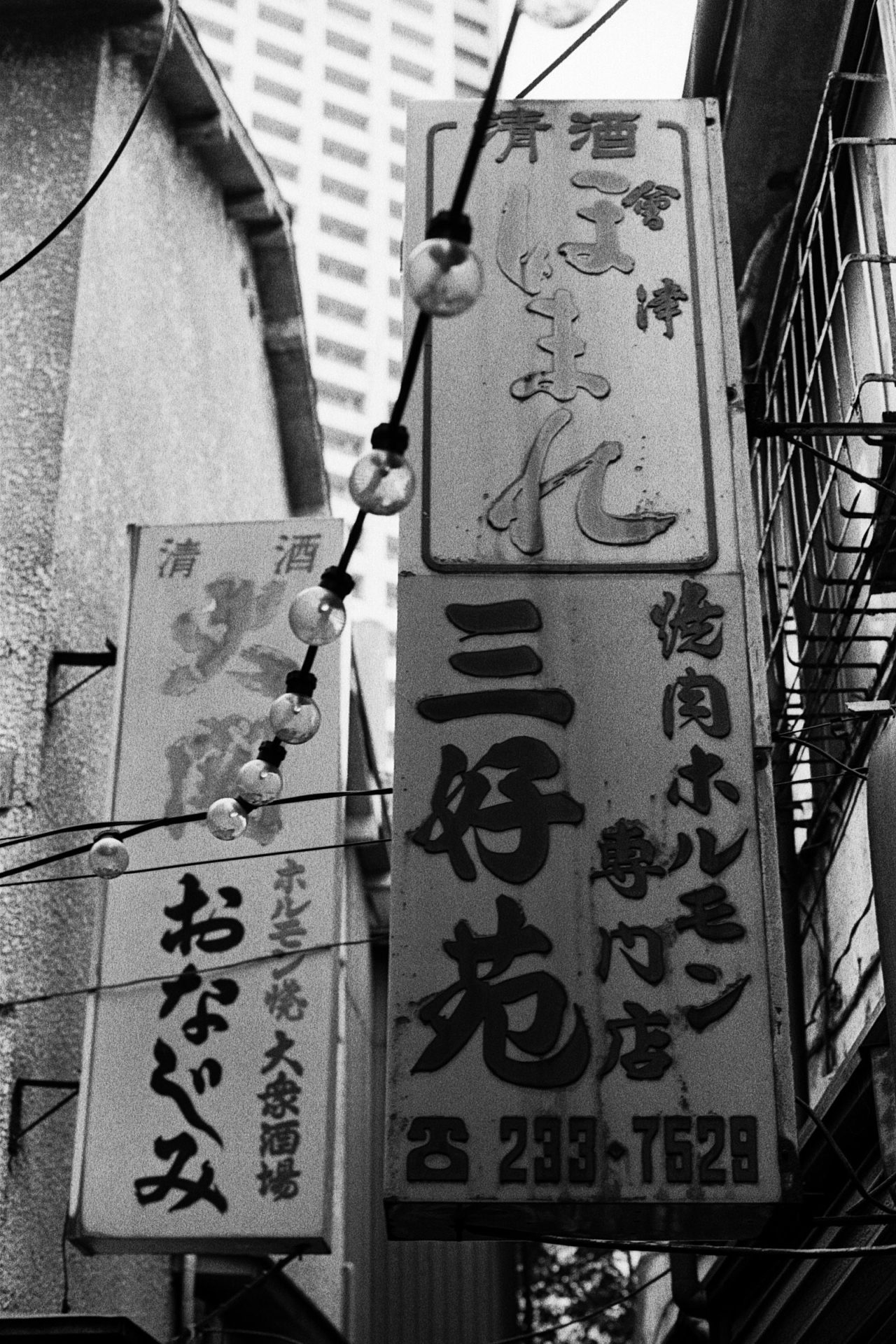
Watch Doburoku Yokocho in a Video(2023)
LOCATION MAP
Garage Sale by Yusuke
I started a garage sale because I think it’s a waste to just let an unused camera sit idle in a box. I hope it can find its way to someone who wants to use it.
NEW ZINE RELEASED.
This photo zine provides a captivating look into Hokkaido, Japan, seen through the photographer’s lens.
It showcases the visages of the Ainu people, man-made artifacts found across the vast landscapes, and the breathtaking views from Cape Nosappu—the easternmost tip of Japan’s main islands.
Each image has been carefully printed in the darkroom and then digitized, allowing you to experience the authentic texture and ambiance of the prints.
for more contents, please follow me
Instagram: @_nuts.tokyo_
YouTube: @_nuts.tokyo_


